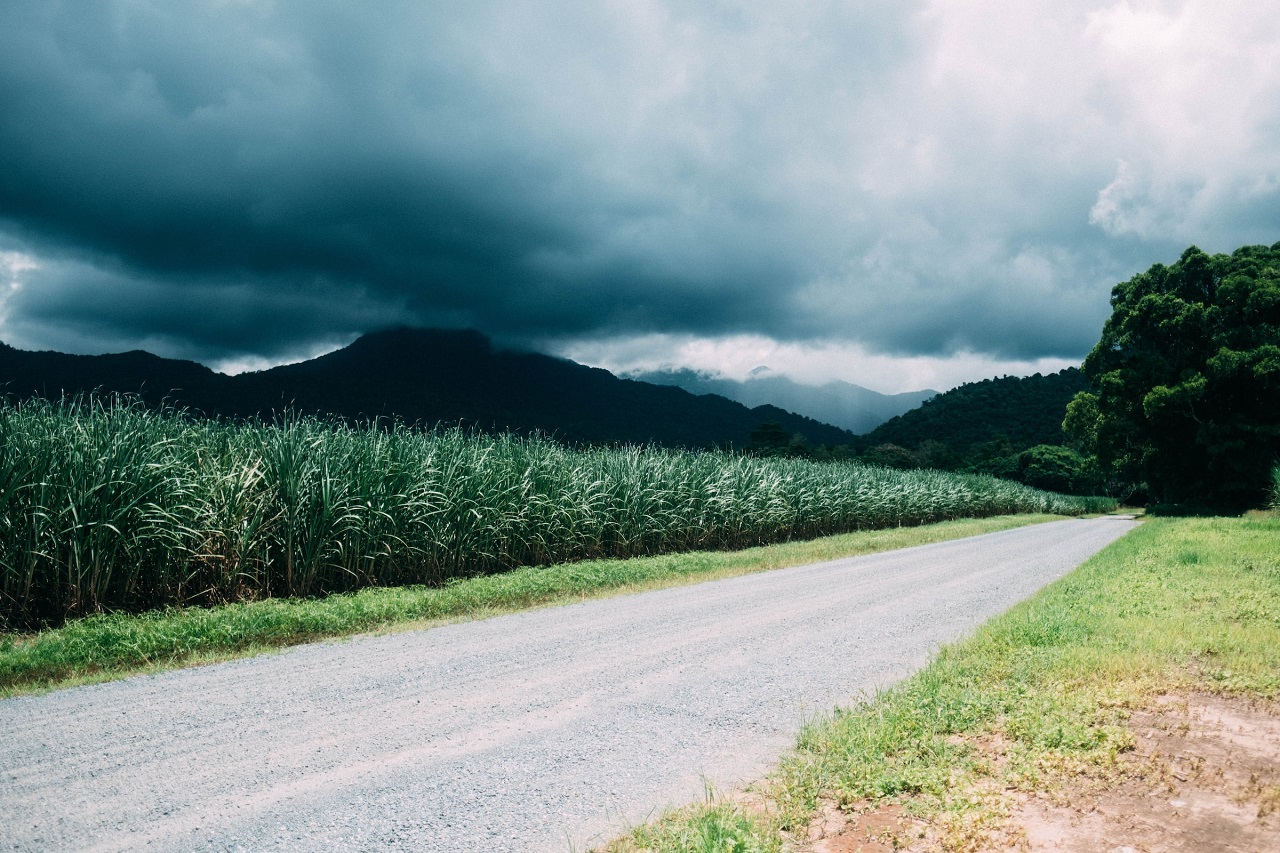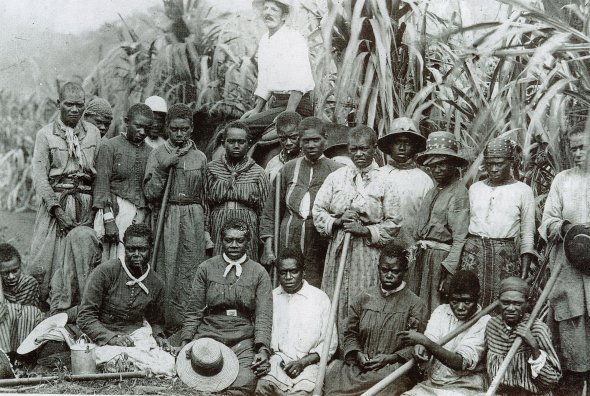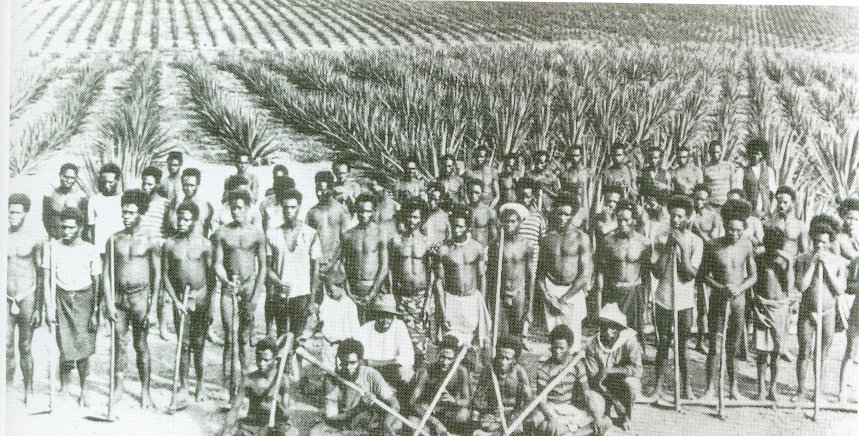The Kanakas And The Cane Fields
White people of long ago didn’t want to work under the heat of the sun. So, they kidnapped residents from different islands. They’re called kanakas.
Author:Jane RestureOct 26, 20235.6K Shares284.9K Views

Once there was a practice called blackbirding - the stealing of young Melanesians to work in the cane fields of Australia and Fiji.
Europeans in big ships with muskets, axes, and mattocks would seduce naive islanders on board to look at other treasures. Sometimes they were offered a pleasure cruise that never came back.
One account tells how recruiters in the bay of a missioned island stood on deck with hymn books, singing, until the islanders paddled out for a look.
Told, falsely, that a Bishop was on board, they clambered up and were promptly thrown in the hold.
Kidnapping Islanders
During the late 1860s and early 1870s, “recruiters” ranged the South Seas in search of kanakas to work Queensland sugar and cotton plantations.
Former South Seas trader Captain Robert Towns began this dubious practice in August 1873 when he imported 67 islanders from:
- the Solomon Islands
- New Hebrides (now Vanuatu)
- Torres Strait Islands
- Papua New Guinea
Captain Robert Towns, an 1863 entrepreneur, brought first New Herbrideans (Vanuatu Islanders) to Queensland for work on his cotton plantation in the Logan district.
One of his skippers was accused of kidnapping. Some recruiters dispensed with niceties and simply hauled men on board.
Over almost 40 years, more than 800 ships scoured the waters of the South Seas, issuing about 62,000 contracts to people labeled kanakas - the Hawaiian name for “boy.”
It’s a story of slavery.
A story of how young men and women from exotic islands such as Pentecost, Tanna, and Malaita in the Solomon Islands were taken - sometimes by force and sometimes by deception - and shoved into the putrid hulls of ships and carried across to work in the cane fields of Australia and Fiji.
The Slave Trade Down Under
When kanakas arrived in Australia, they were put to work clearing the land of white land owners, who thought that white men would probably die if forced to labor in the tropical Queensland heat.
As the kanakas toiled in the fields, they were watched over by overseers often on horseback and armed with stock whips - something intended for cattle and not for human beings.
One vessel actively involved in the labor trade was the brig Carl which arrived at Levuka in Fiji in June 1871.
The brig was partly owned by Dr. James Patrick Murray, who, upon arrival at Levuka, promptly sacked the brig’s entire crew of eleven - bar one, the mate, Joseph Armstrong, whom he promoted to captain.
Greed And The Stench Of Money
The only thing motivating Dr. James Murray and his fellows was money, and friendly persuasion can take a lot of time.
Controlling the vicious short-cuts frequently adopted by recruiters was no easy matter.
Also, in waters where ships frequently changed owners, flags, and appellations - often overnight - vessels were virtually free to ply a malodorous trade.
Such vessels often come in deceptively fragrant names, such as:
- Blossom
- Daphne
- Water Lily
The Royal Navy were present in:
- Barrosa
- Basilisk
- Cossack
- Rosario
Still, despite their constant presence in these places, it was an immense area to police and the odds, more often than not, were against the custodians of the law.
The Kidnapping And The Pig Iron Technique
A week after he arrived in Fiji, Dr. Murray set sail for the New Hebrides (Vanuatu) to make his fortune and the tragic events that took place on board the brig Carl during this first recruiting voyage followed shortly after.
The brig followed the well-established trading route through the New Hebrides until he reached the Solomon Islands some eight to nine days later.
Dr. Murray devised a novel and ingenious technique to recruit labor - one that both overcame the language barrier and saved an enormous amount of time.
Initially, a few overtures were made to the locals such as holding beads, paints, pipes, and tobacco over the ship’s side.
Then bars of pig iron, which were attached to ropes, were thrown overboard into the circling canoes, which either sank or were overturned and tipped their occupants into the water.
Any natives that were stunned or not quick enough to escape were fished out by the brig’s crew and thrown into the hold.
And so, it continued.
From Santa Ana, the Carl sailed north to the Florida Islands and on to the island of Ysabel - all in the Solomon Islands - perfecting the pig iron technique as it went.
The natives came on board “almost voluntarily,” said Murray later, in a quaint turn of phrase.
Murray had about sixty or seventy unsuspecting islanders securely in the hold by the time Bougainville came into sight.
Here Murray met with rather more opposition, when “large, powerful men, armed with bows and arrows, and spears and clubs” came out to the brig.
After a severe fight, forty were taken and shoved in the hold with the others.
Rebellion
Up until that time, the crew had managed to keep the various groups apart - a sensible measure, given the internecine warfare between the various island groups.
However, a day after another forty captives were taken at Buka Island and the alarm was given that the natives below decks were in revolt. The Bougainville newcomers were, in fact, fighting with the older residents.
It was then found that they were trying to set fire to the ship.
At this time, some of the natives were allowed on board and those left behind in the hold were fired on by their captors.
The firing continued at intervals all night, and in the morning the hatches were taken off and the dead and wounded brought on deck.
There were, it is said, about fifty dead and about twenty wounded who were all thrown overboard.
By the time HMS Rosario overhauled and boarded the brig as it proceeded to Levuka, the hold had been whitewashed to remove the smell, all rebellion had been quelled and everything seemed shipshape.
It was left to another Royal Navy crew, at the end of the second voyage in April 1872, to pick out the bullets from the woodwork and to lay charges.
Another Series Of Kidnapping Spree
The second recruiting voyage of the Carl began in December 1871 until April 1872.
The brig left Levuka on December 21, 1871 with Dr. Archibald Watson on board by invitation of the Captain, Joseph Armstrong.
On January 20, 1872, the brig anchored off the coast of Espiritu Santo. It then sailed north and sighted the Torres Group on Monday, January 22.
The next day the ship reached the western side of the northernmost island in the Torres Group and sighted the schooner, Daphne.
On Friday, February 2, they reached Onotoa Atoll and stood out to sea that night.
The next day, February 3, they sailed past Tabiteuea Atoll, where a great many canoes came off.
Many natives remained aboard during the day trading for tobacco and the following morning several canoes pulled alongside selling fish that had been caught overnight.
The Carl eventually reached Ovalau, having recruited men in:
- the Carolines
- the Marshall Group
- the Kingsmill Group
It was at the end of this second recruiting voyage in April 1872, that charges of kidnapping and murder were laid against the captain and the crew of the Carl because of the tragic events of that first recruiting voyage.
Sending Home The Kidnapped Natives
By the late 1890s in Australia, most of the really hard yakka(work) had been done and white laborers figured they could handle it from here.
Deportation of the men and women who cleared and farmed Australia’s sugar fields became one of the first acts of the newly federated nation of 1901.
In the end, exemptions were won but most went back.
By 1908, about 7,000 kanakas from across Queensland and New South Wales had returned to their islands.
Officially, 1,654 kanakas stayed but the true figure is believed to be about 2,500.
Present Times
Today, about 15,000 descendants of these sugar pioneers live throughout Australia, mostly in Queensland and northern New South Wales.
They call themselves “the forgotten people” as discrimination and neglect are constants in their history, but they are resilient people who are determined to ensure their legacy is elevated to its proper position.
There is little doubt that the use of kanaka labor obtained by force or deception constituted a form of slavery.
The kidnapped Melanesians had no concept of indentured labor and no sanctions could hold them to a contract they simply did not understand.
There is no doubt in the minds of the descendants of the original kanakas that this was most certainly the case.
There’s also little doubt, however, that this would be considered by many to be a very shameful part of Oceanic history.
For that, stories about the kanakas - how and why they were kidnapped and forced into slavery - should never be allowed to be forgotten.

Jane Resture
Author
Since she embarked on her first world trip in 2002, Jane Resture spent the past decades sharing her personal journey and travel tips with people around the world. She has traveled to over 80 countries and territories, where she experienced other cultures, wildlife she had only read about in books, new foods, new people, and new amazing experiences.
Jane believes that travel is for everyone and it helps us learn about ourselves and the world around us. Her goal is to help more people from more backgrounds experience the joy of exploration because she trusts that travel opens the door to the greatest, most unforgettable experiences life can offer and this builds a kinder, more inclusive, more open-minded world.
Latest Articles
Popular Articles

